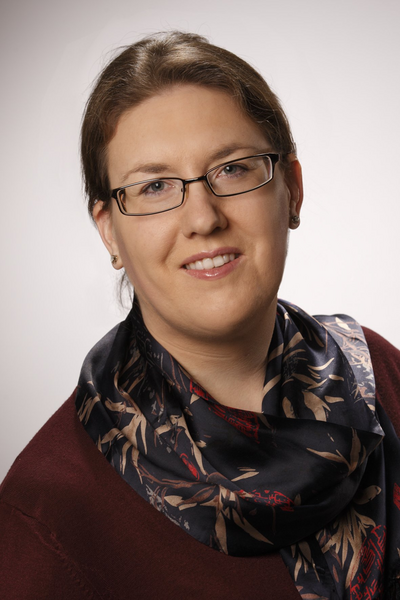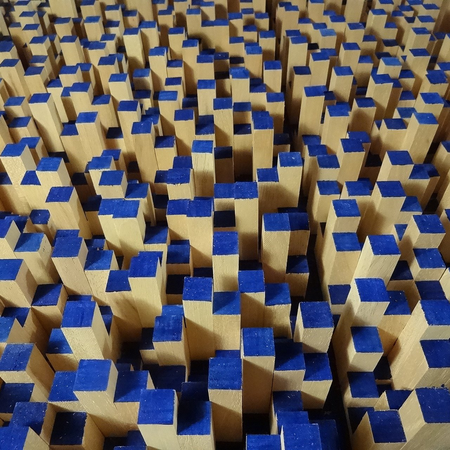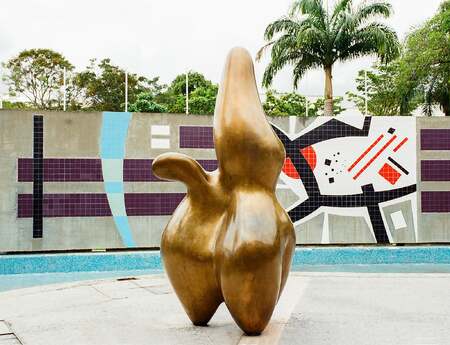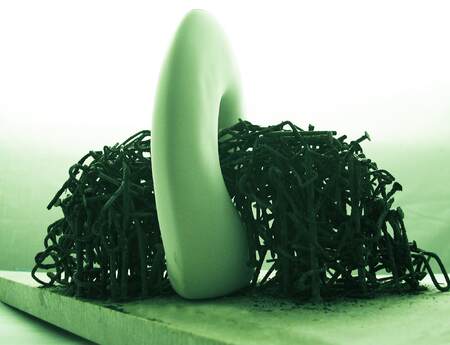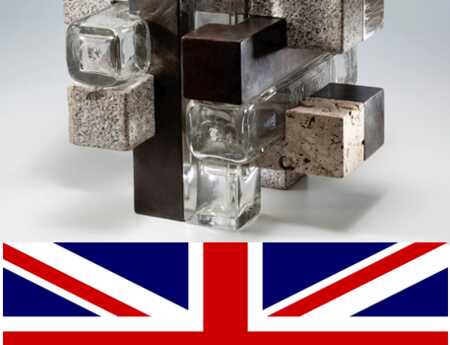Concrete art - a geometric reality
Concrete Art is characterised by geometric forms and an important reference to colour as a stylistic element. It claims to be art for the sake of art itself— without offering possibilities for deeper interpretation by the viewer. The Stiftung für Konkrete Kunst Roland Phleps in Freiburg-Zähringen and the Edwin Scharff Museum in Neu-Ulm will be presented on this theme. Both institutions are members of Sculpture Network.
The term "Concrete Art" goes back to the Dutch artist Theo van Doesburg. He wrote a manifesto which was published in 1930 in the Parisian magazine "Art Concret" and marked the beginning of a new style in art. The forerunner of Concrete Art was Abstraction, which began at the turn of the century. While Abstraction simplifies given, representational motifs, the approach to a "concrete work of art" is completely different. In addition to the term "concrete", the artists used the term "constructive" in the reception of their works and it is still used today. This has to do with the fact that the creation of the works is also always about "constructing" an aesthetic idea that only has to satisfy itself.
To this day, a definition of terms between Concrete Art and Constructivism has not been fully developed; the terms are sometimes used synonymously.
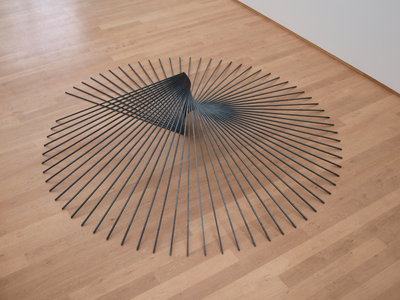
Picturesque works of Concrete Art can consist of geometric surfaces, lines, forms, or a combination of these elements. Sculptures have geometric surfaces and forms that can be bent or folded, but always have a strict structure with nothing organic about them. The lines and surfaces of these sculptures can be designed in different colours, or be left uncoloured. A smooth colour gradient, e.g. from light to dark, is not desired. Nevertheless, the works can contain geometric colour gradations. These colour schemes are partly monochrome or designed in strong, clear colours. The artists' preoccupation with the material and the exploration of color as a material in itself encourages the serial work. A series of works, therefore, can be created by changing the colouring from the first work to a lighter or different shade in the subsequent works.
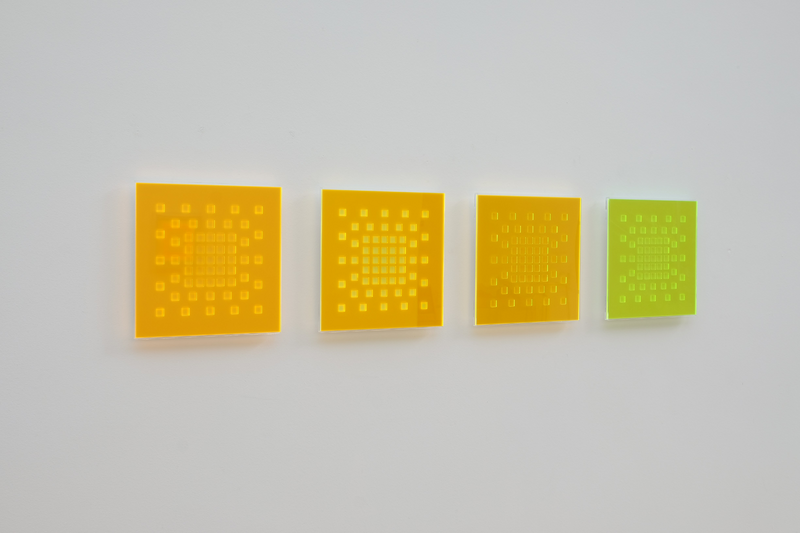
Concrete Art is strongly linked to mathematical procedures and geometric constructions, which are necessarily regarded as the basis for the creation of works. The work is first mentally conceived of in its entirety before it is executed, spontaneous changes are not planned for. Scientific thinking and the limitation to form and colour are other essential components of Concrete Art. There are no additional meanings or statements in the work. The creation and observance of rules to which a work of art must be subordinated is regarded by the artists as mandatory.
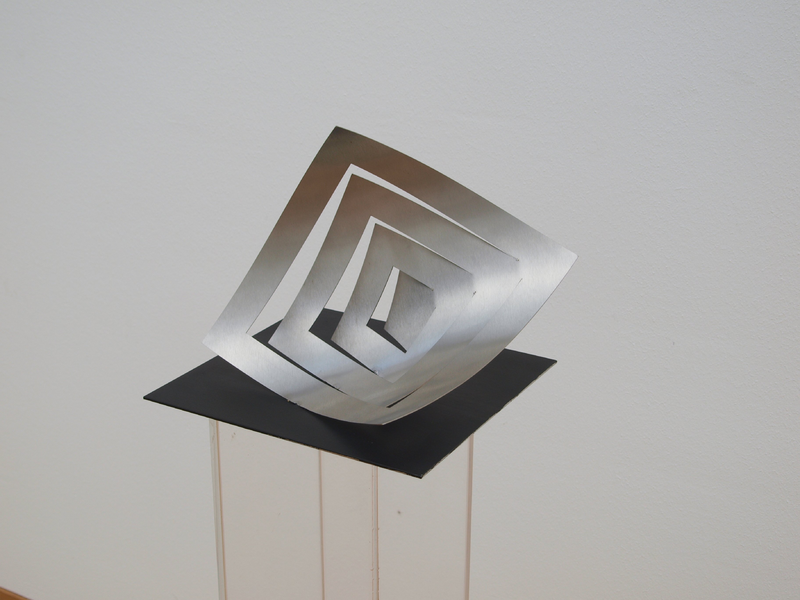
Concrete Art spread from the Netherlands to German-speaking countries, Italy, France, the USA, and, above all, Switzerland. In addition to Concrete Painting and Sculpture, forms of Concrete Photography and Poetry also developed. The Bauhaus was particularly influenced by the "concrete/constructive" artists and their art. With the rise of National Socialism in Germany, many representatives of Concrete Art were banned from working or emigrated to Switzerland because the National Socialists regarded this art movement as degenerate. Since Switzerland remained neutral, Zurich became the centre of Concrete/Constructive and Modern Art.
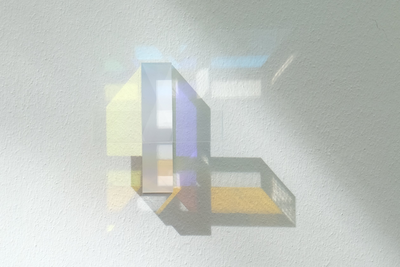
In addition to Theo van Doesburg, important representatives of Concrete Art include Max Bill, Richard Paul Lohse, Sophie Taeuber-Arp, Peter Staechlin and Josef Linschinger.
Two representatives of Concrete Art are the Stiftung für Konkrete Kunst Roland Phleps in Freiburg-Zähringen and the Edwin Scharff Museum in Neu-Ulm. Both are members of sculpture network.
We are pleased to be able to present both institutions with their exhibitions and collections here.
Stiftung für Konkrete Kunst Roland Phleps
The Stiftung für Konkrete Kunst Roland Phleps was founded in 1997 by the artist Roland Phleps and is dedicated to the support and mediation of Concrete Art. On the premises, there is a sculpture hall and a park. Roland Phleps' large-format sculptures are exhibited in the open-air grounds and the Skulpturenwiese am Waltersberg. Every year, three exhibitions of works by invited artists on the theme of Concrete Art are curated in the Skulpturenhalle. This takes place alternately with exhibitions of the works of Roland Phleps. In addition, concerts and other daytime performances occasionally take place in the exhibition hall. Other sculptures by Phleps can be found in the Stadtgarten, in front of the University and the Botanical Garden and in Würzburg, Dresden, Ulm, Nürtingen, and the birthplace of Phleps, Sibiu, Transylvania.
Furthermore, the Stiftung für Konkrete Kunst Roland Phleps not only aims to present the sculptural work of Roland Phleps, but also enables viewers to experience the entire spectrum of Concrete Art through the various exhibitions with invited artists.
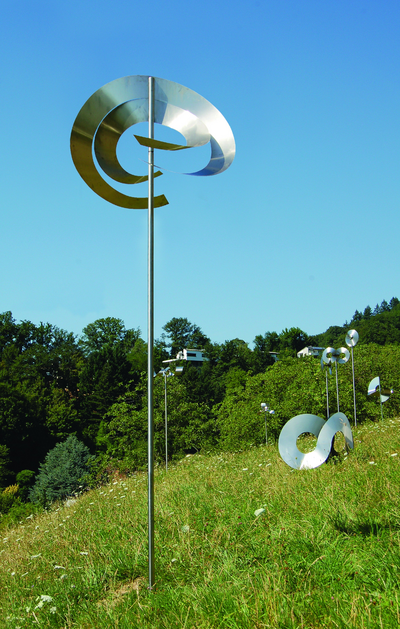
The invited artists for 2019 are Fabian Gatermann Licht als Phänomen, Ina von Jan Farbe, Licht und Schatten, and Natacha Caland/Ueli Gantner with Duett in drei Dimensionen - trois dimensions en duo.
Roland Phleps uses brushed stainless-steel sheets for his sculptures. He cuts this material into different shapes and bends or folds it. The main elements in his work are circles, rings, ellipses, and triangles. However, for the artist, these modules are not powerful enough without further deformation. By bending these elements, the material, which typically appears heavy, acquires a lightness that evokes, among other things, dancing. This was especially evident at the exhibition Schwünge und Tänze II (until March 2019). With their curved forms, the works are reminiscent of light moving parts that interpret movement in ever-changing variations. In the series Circular Arc Triangle Pairs, “almond”, “tango”, “horns”, and “agave” are variations of two circular segments which are always cut and arranged uniquely, lining up in a kind of continuous swing.
The exhibition Dreiecke, räumlich (which ran until 8 September 2019) varies the theme of a curved triangle segment. The parts of the work are able to convey movement and lightness through their curved exterior.
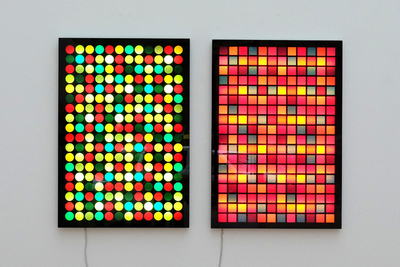
The works of Fabian Gatermann exhibited from March to May 2019 deal with phenomena and light as artistic means of expression. His works stand in the field of tension between art, design, communication, and engineering science. Gatermann's artistic work focuses on perception and insight. In his works Light Edges and Lense Flare, he uses forms made of transparent materials that are built up side-by-side and one behind the other. When these are illuminated, the refraction of light brings to rise reflections and phenomena which reveal new coloured geometric structures. These structures are very ephemeral and show a high volatility. In the light object MoodPoem, tinted panels are arranged in a grid with a colour-changing backlight. As it cycles, new colour combinations constantly emerge.
For Ina von Jan, whose works were exhibited from May to July 2019, the effect, purity and aesthetics of colour are the central motifs of her artistic work. The artist's preferred material is plexiglass and acrylic glass, often deformed, arranged in several layers on top of each other, and in strong, luminous neon or fluorescent colours. She works serially (e.g. from orange to green) or with the exchange of colour surfaces in pictures with the same basic geometric structure (e.g. in No. 0616610 and No. 06166310), thus testing the effect of the colors used.
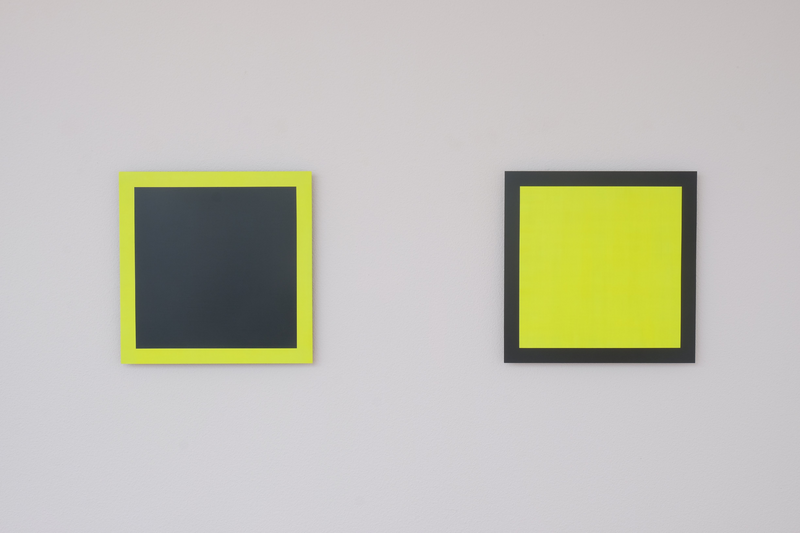
In the works of Natacha Caland and Ueli Gantner, the main focus is on light, shadow, and movement. The two artists met at an exhibition in 2013 and began to work together artistically on the basis of similar compositions. The artists work modularly with relief-like geometric structures. The special feature of the works is that, starting from a flat ground plane divided into narrow, elongated sections of equal size, the forms depicted stand out from the ground plane like a grid. This difference in height is emphasised by the use of different colours. This can be observed in Caland's work moving blue and in Gantner's pmn 2.
The exhibition by Caland/Gantner can be seen from 15 September to 3 November 2019 in the Sculpture Hall of the Foundation.
Edwin Scharff Museum
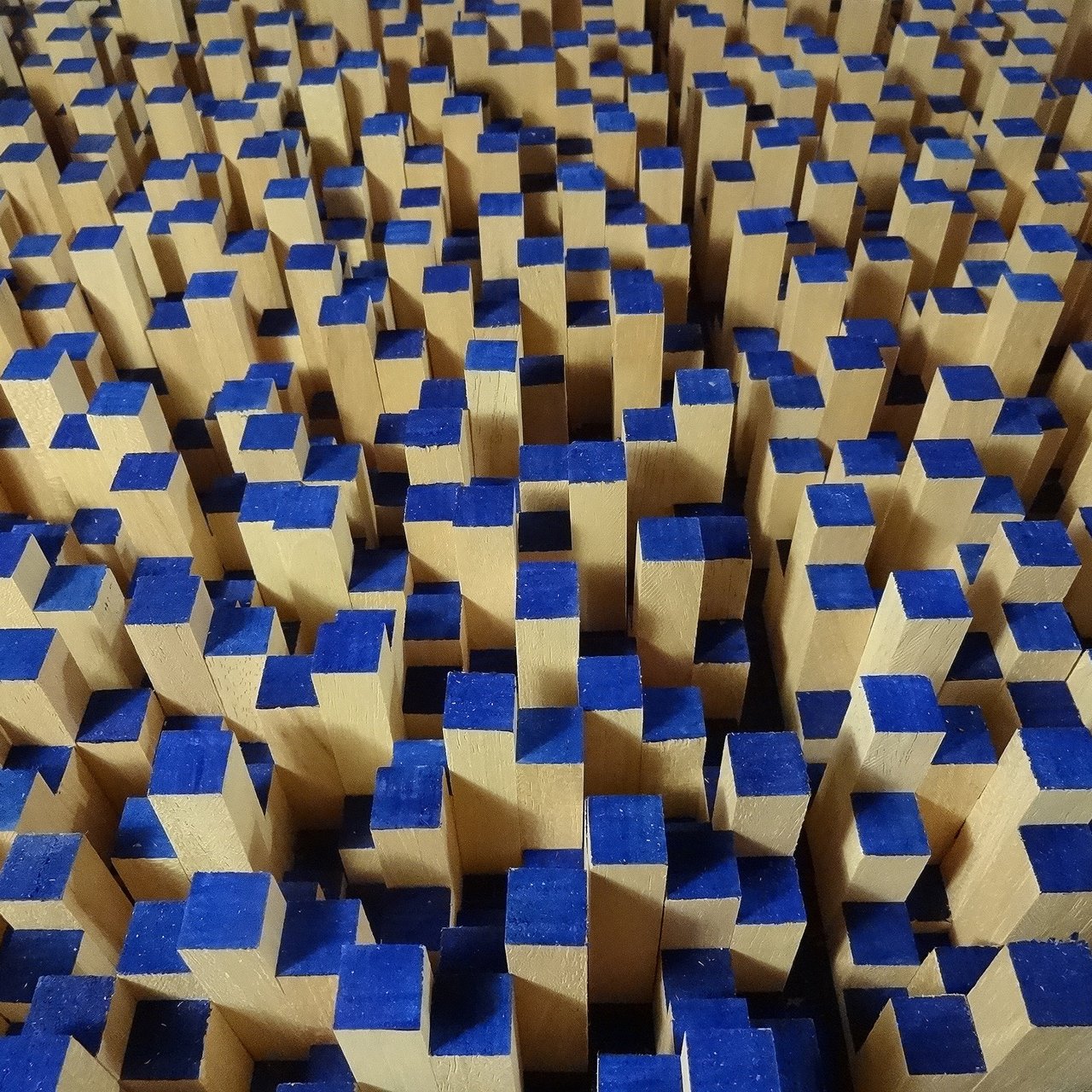
Collage Holz/Acryl, Original 90 x 100 cm x 2
The Edwin Scharff Museum in Neu-Ulm houses the Edwin Scharff and Ernst Geitlinger collections, among others. The works for the two permanent exhibitions come from these collections. Edwin Scharff and Ernst Geitlinger were acquainted and were members of the jury of the Deutscher Künstlerbund for several years (from 1950). The Scharff and Geitlinger collections, which are housed in the Edwin Scharff Museum, contrast with each other. The distinction between Geitlinger's abstract and concrete paintings and Scharff's figurative representations is brought into an exciting field of action by the museum. The museum aims to offer a fascinating framework for sculptural-figurative art in contrast to Concrete Art.
Edwin Scharff, after whom the museum was named, was a painter and sculptor whose works mainly depicted horses and humans. Scharff worked mainly in bronze and also with marble. He was appointed as a sculpture professor in Berlin in 1923. Scharff's works have a heroic expression, especially his depictions of horses. These works refer to man's superiority over creation in the control of an animal.
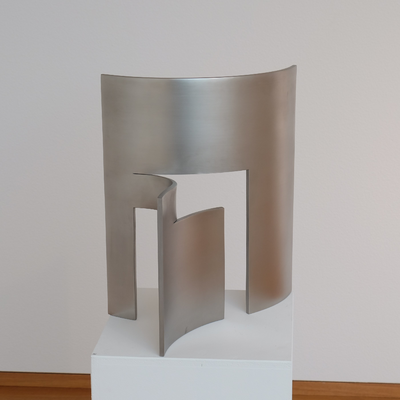
Images of man often resemble representations from antiquity. The sculptures and paintings correspond to a classical, figurative formal language, but raise a contemporary, partly futuristic claim. This was initially tolerated by the National Socialists, but later Scharff was forcibly transferred to the Staatliche Kunstakademie Düsseldorf and finally expelled from the party; his art was increasingly regarded as degenerate from the middle of the 1930s onwards. Scharff was banned from the profession but continued to work secretly. After the end of the 2nd World War, Scharff was rehabilitated. In 1955 and 1959 his works were exhibited at documenta 1 and documenta 2. Scharff received a professorship at the Landeskunstschule Hamburg.
Students of Edwin Scharff include Hermann Blumenthal, Ursula Querner and Heinz Ernst.
The Geitlinger Collection consists of over 100 paintings and around 700 works on paper. The painter Ernst Geitlinger distanced his works from reality more and more via simplification until he finally painted completely abstract. To the same extent that abstraction progressed, the colour spectrum was also reduced. Few clear colours, often only two or three in number, characterize the pictures.
Geitlinger's art was also regarded as degenerate during the Nazi era, and his works were banned from being exhibited. Geitlinger's life and artistic work exemplify the development of Concrete Art.
The Edwin Scharff Museum also honours Geitlinger's work as a teacher and juxtaposes the works of the students with his works. The museum showed the exhibition Attraction and Differentiation, consisting of the works of Ben Muthofer and his teacher Ernst Geitlinger (April to September 2016). This illustrates the further development of Concrete Art as a style and Geitlinger's impact up to the present day. Geitlinger's pupils include Roland Helmer, Ben Muthofer, Uli Pohl and Klaus Staudt.
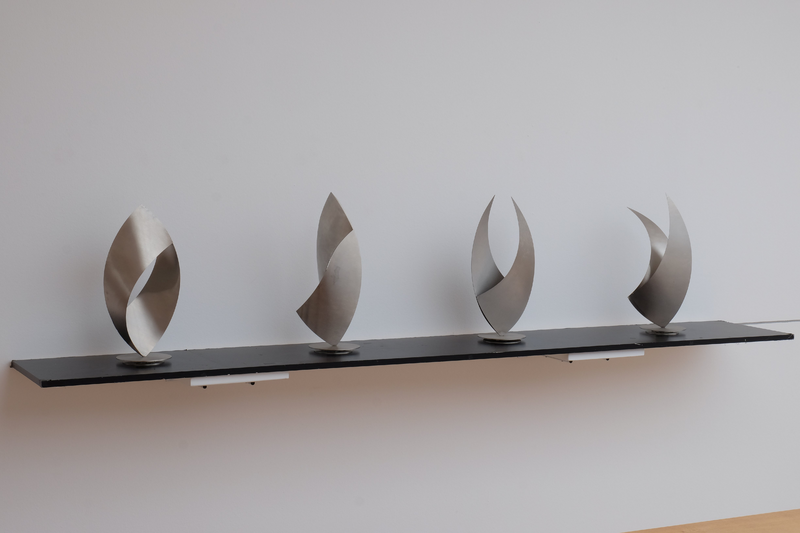
The Scharff Collection was used by Prof. Stefan Wissel of the University of Siegen to create an artistic staging of Edwin Scharff. This installation complements and expands the view of Edwin Scharff by juxtaposing contemporary works of art with works of traditional art. With the staging of postproduction, new ways of seeing, thinking, and associating Edwin Scharff's work emerge. Wissel's installation can thus be seen as a reaction to themes worked on by Scharff. Wissel also intended the various artistic approaches to the theme of sculptural sculpture and the temporal aspect of the "succession" of artistic works to be thought of in combination with current issues. From Scharff's painterly and sculptural works, Wissel curates an independent spatial situation that brings important works by Scharff into new contexts and relationships.
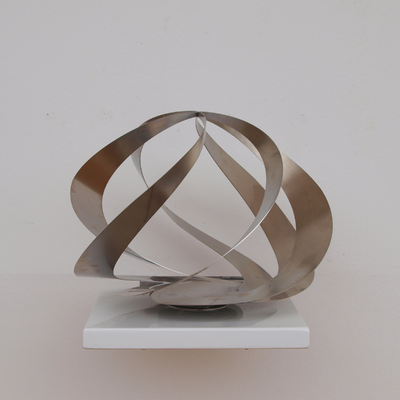
The exhibition Zarte Männer in der Skulptur der Moderne, which also presents figurative sculptures, is currently on view until the beginning of November 2019. The sitters are depicted as young men and in their vulnerability are an unusual reflection of the predominant male image of the "strong, heroic man" in the work and military of this period. The depicted male image does not correspond to the man of the Nazi era, who had a completely different intention.
It is worth paying a visit to both institutions to let Concrete Art have its effect on you!
More Information:
Stiftung für Konkrete Kunst Roland Phleps
Edwin Scharff Museum
Author: Dr. Eva Daxl
Eva Daxl studied art with a focus on sculpture. In her PhD thesis she wrote about ceramic materials in art criticism. She is therefore familiar with three-dimensional works of art in theory and practice.
